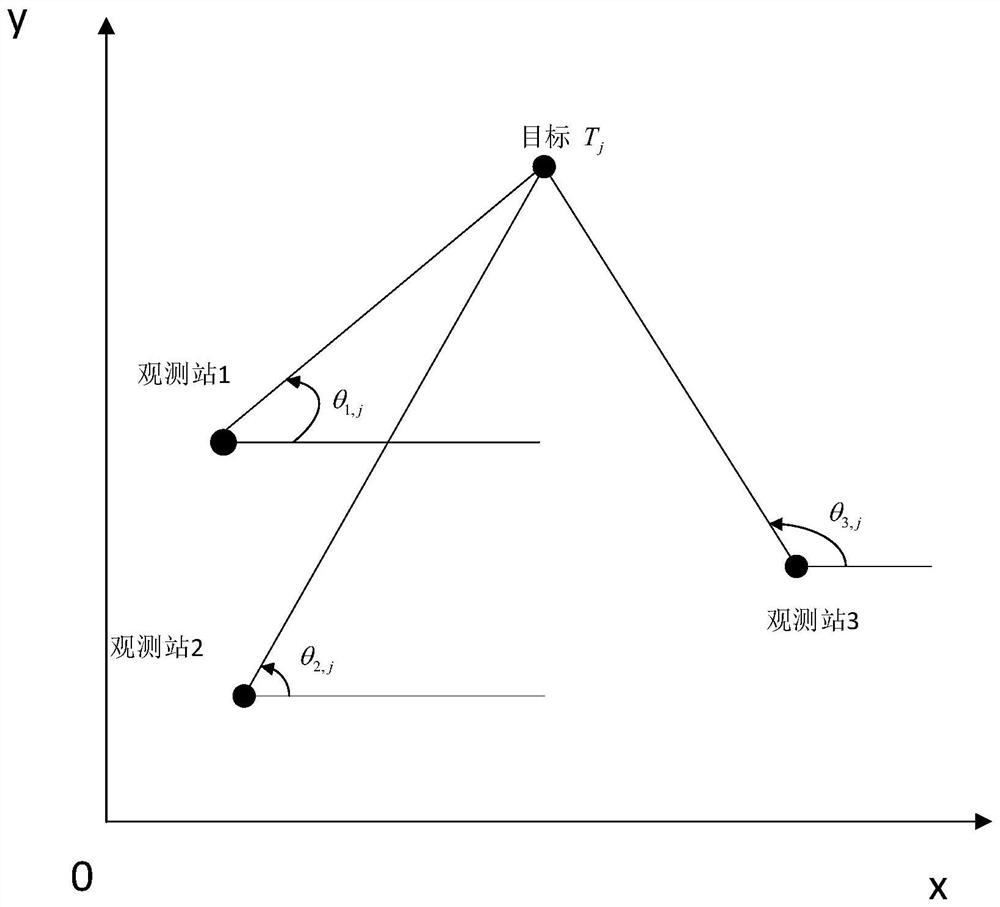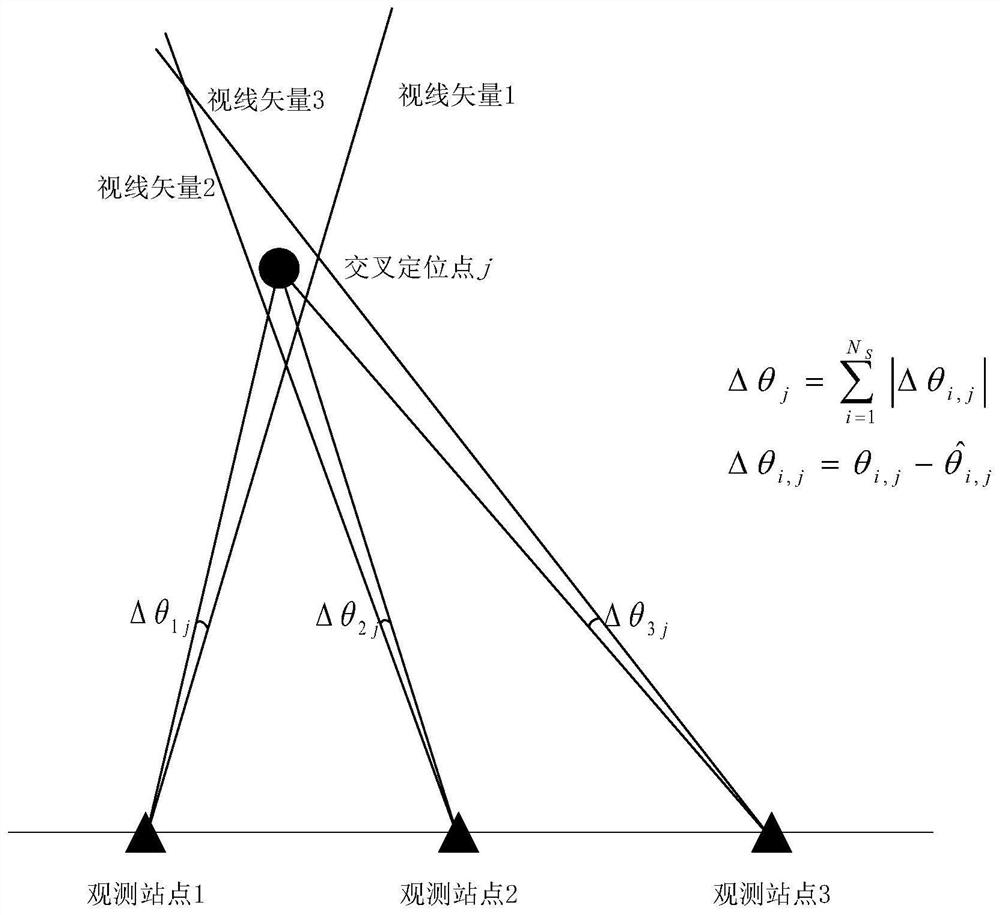A Data Association Method Based on Tree Structure and Layer-by-Level Node Pruning
A tree structure and data association technology, applied in the field of electronic reconnaissance, can solve the problems of unable to automatically distinguish from the same target, unable to guarantee the accuracy of data association, not considering the cumulative angle error, etc., to achieve both the accuracy of data association and real-time calculation. performance, ensure the real-time performance of the algorithm, and reduce the effect of observation noise and error propagation
- Summary
- Abstract
- Description
- Claims
- Application Information
AI Technical Summary
Problems solved by technology
Method used
Image
Examples
Embodiment
[0075] For the convenience of representation, only the two-dimensional plane positioning of the target is considered. In the XOY plane, there are 3 observation stations, N T radiation sources, and the coordinates of the observatory are denoted as S 1 , S 2 , S 3 , the angle measurement accuracy is σ 1 , σ 2 , σ 3 , and the radiation source target coordinates are marked as Such as figure 1 As shown, the present invention is a kind of data association method based on tree structure and hierarchical node pruning, mainly comprises the following steps:
[0076] 1. Obtain the angle observation value
[0077] N T The angular observation values obtained from the direction finding of radiation sources and targets form an angular observation matrix θ all :
[0078]
[0079] Among them, θ i,j Represents the observation result of the i-th station on the unknown target j, corresponding to a line-of-sight vector, such as figure 2 As shown, the angle value is the angle ...
PUM
 Login to View More
Login to View More Abstract
Description
Claims
Application Information
 Login to View More
Login to View More - R&D
- Intellectual Property
- Life Sciences
- Materials
- Tech Scout
- Unparalleled Data Quality
- Higher Quality Content
- 60% Fewer Hallucinations
Browse by: Latest US Patents, China's latest patents, Technical Efficacy Thesaurus, Application Domain, Technology Topic, Popular Technical Reports.
© 2025 PatSnap. All rights reserved.Legal|Privacy policy|Modern Slavery Act Transparency Statement|Sitemap|About US| Contact US: help@patsnap.com



